“One Piece” Cinematographer Nicole Hirsch Whitaker
Emmy-nominated cinematographer Nicole Hirsch Whitaker is a graduate of NYU Tisch School of the Arts and has worked in the industry for decades. Filmmakers Academy sat down with Nicole while in the middle of filming the live-action Netflix adaptation of One Piece, an extraordinarily popular manga, and anime series.
Keep reading to learn more about Nicole, her journey as a cinematographer, and process for the upcoming Netflix series.
INSPIRED BY EUROPEAN CINEMATOGRAPHY
Photography was the first love of Nicole Hirsch Whitaker. In fact, she thought it was her path in life. She dreamt of being a fine art photographer. Nicole was never really inspired by popular American cinema and wasn’t aware of avant-garde filmmakers.
While in high school, that changed when she was introduced to European films. They were very unlike American films. What she saw in the European films aligned with her photographically and it dawned on her. Cinematography was a viable career path that allowed Nicole the artistic freedom to creatively explore.
BEGINNING IN THE FIELD OF CINEMATOGRAPHY
Growing up in Los Angeles, Nicole had the ability to work on sets through family connections. She attended NYU at just 17 years old. A few years later at the age of 20, she served in an internship program for a filmmaker who was both a director and cinematographer at a commercial company.
Nicole was thrown into the fire where she did everything from editing to producing and shooting. It was in that “crash course” environment that she worked for two years before moving back to Los Angeles to start her work as a cinematographer.
For about 15 years, Nicole shot commercials while dabbling a bit in narrative to further kindle her love in the medium. However, by this point in her career, she couldn’t even imagine not telling stories.
INFLUENCED BY ART
When Nicole first started photography, it was something that just came to her naturally. She immersed herself in the work of other photographers and lots of artwork. Her mother is an artist, she was raised in museums in Los Angeles, surrounded by art, and they traveled the world. Like osmosis, she absorbed what she saw into her own work.
However, there is no single artist that Nicole tried to model herself after. Rather, she saw each work collectively as her inspiration. For instance, she would see a photograph by Man Ray and want to create interesting treatments, macros, and double exposures, and consider her creative decisions outside the box.

CONNECT WITH LIKE-MINDED FILMMAKERS
For Nicole Hirsch Whitaker, the creative process for cinematography was about connecting with like-minded filmmakers, like directors, who have a similar vision. That way, she wouldn’t have to try to fit in someone else’s bubble.
Nicole notes that there are times when you will be excited about a big job, but ultimately, it might not be right for you. It’s important to make sure that when you’re starting a project, you’re on the same page as everybody.
It’s tricky because sometimes you think you are and then you start the project and they’re like, “Wait a minute, I didn’t want that. I wanted this…” And then you either realize that you’re not the right person or find a way to work through it.
TRANSITIONING TO NARRATIVE STORYTELLING
It was a long process for Nicole. While filming commercials, she shot a couple of movies and TV shows – but not much. The streaming wars changed that. More content than ever before was produced. She never really wanted to film TV before but then Nicole told her agents that she would like to give it a go. At first, they said it was going to be impossible since she didn’t have many TV credits. She advised them to just put her out there. She feels confident in a room and could convince someone to hire her.
Fortunately, Nicole’s husband is also a director of photography and was working on a show where he was given an episode to direct. Her husband and the showrunner agreed to give her the opportunity and she ended up shooting two episodes while he prepped as well as the one he directed.
After that, Nicole was able to land more TV gigs. It was all a matter of getting her foot in the door. Otherwise, it wouldn’t have been so easy. From there, the floodgates opened and she had tons of meetings.
WHEN IS IT TIME TO SEEK OUT REPRESENTATION?
Nicole sought out representation right away because she knew how important it was for her career. She had done lots of second unit work and put together a reel. She showed an agent with a small agency who agreed to represent her and she landed a commercial job within a month.
After some time, Nicole went to a bigger agency and then to an even bigger agency after that. Agents are helpful because they help guide you in terms of jobs, especially when considering the scale of jobs, travel, and duration. It’s helpful to bounce ideas off the agent and help with negotiations.
However, even with an agent, you still must do the work. It’s not as simple as, “I have an agent, now I will get lots of work.” In reality, it’s more of a collaboration. This involves dinners with people and keeping up with friendships. A solid social life with fellow filmmakers (especially cinematographers and directors) will help you go far. Nicole has greatly benefited from recommendations due to her relationships.
Many cinematographers helped Nicole in her career. For example, even before Nicole began work on the live-action adaptation of the One Piece anime series, she reached out to cinematographers who worked with boats. This included Paul Cameron about Pirates of the Caribbean and one of her key grips who worked on Life of Pi. The advice she received was astronomical in helping her plan for her upcoming production.
Until the crew starts, DPs are mostly working by themselves. While production designers and special effects have whole departments, the director of photography doesn’t have much support to rely on in pre-production.
That said, on a show like One Piece, Nicole had her crew six weeks before production began. Even still, she felt limited in the amount of research and development it took to pull off. Before that, she worked for three months by herself and communicated with lighting and camera houses to come up with ways to shoot the project.
LIVE-ACTION ONE PIECE SERIES
“We’re having so much fun,” says Nicole from the production office. Before that, the production was stalled due to the pandemic and then she was in her aforementioned months-long prep. Nicole is just in charge of the first block of production, which amounts to 62 days.
Hawk developed lenses for One Piece in collaboration with Nicole from scratch, who describes that as “just beautiful.” Nicole also praises Netflix for its amazing support for the series adaptation.
For the last three shows Nicole did prior to One Piece, she was the beginning director of photography. The challenge is creating something that’s new and different while also something that other directors of photography can follow. You don’t want to do something so difficult that they can’t achieve it with a shorter schedule.

WHAT’S IT LIKE ADAPTING AN ANIMATED SERIES?
First off, Nicole watched the 1,000+ episodes of One Piece, which was not as hard as it seems since her son is a huge fan. In fact, she was already familiar with the source material having read the manga to her son.
The adaptation also consisted of a back-and-forth collaboration with the director. They wanted it to stand out on its own and not just be a carbon copy of the anime. Together, they referenced different films along with photography and the look of the show.
Just like DC and Marvel, One Piece has an enormous audience. Specifically, Marvel has done an excellent job of adapting characters to fit the culture of the day.
“There will always be fans and critics. You can’t please everyone but at the heart of it, the most important thing is the story. And if the story isn’t there, and that doesn’t grab the viewers, it doesn’t matter what you do. We can only hope that we’re going to gain a new audience and people that find it fascinating and interesting.”

CAMERAS AND LENSES
Nicole is a die-hard fan of Alexa camera systems. Unless it’s dictated for some reason or she has taken over a show for someone else, she always shoots Alexa LF. Nicole has also enjoyed the Sony FX3 – especially after the masterclass she did with Shane Hurlbut, ASC. They have used it for specialty shots and Nicole recommends it for younger filmmakers since it’s smaller and less expensive than most.
When it comes to lenses, Hawk and MasterBuilt are Nicole’s go-to companies. As mentioned, Nicole has been in collaboration with Hawk for her last few projects. More specifically, their LF anamorphics. Nicole has also turned to MasterBuilt Lenses’s 14.5 lens which looks like an 8-millimeter lens with no distortion.
BUILD RELATIONSHIPS WITH RENTAL HOUSES
The minute Nicole knew what she needed, she called Peter Martin at Hawk in Germany. She told him the kind of lens that she was looking for but it didn’t exist yet. Peter asked how much time he had and Nicole told him five months. So, Peter told her that he could build the lenses that she needed.
After some meetings, Netflix was onboard and then the production was onboard after that since they had to pay for five sets of lenses from scratch. If Nicole did not have that relationship with Hawk, it never would have happened. Otherwise, she couldn’t just call up a lens manufacturer and have them create the lenses.
THE LANDSCAPE FOR FEMALE CINEMATOGRAPHERS
When Nicole began her career, she didn’t even think about the landscape of women in the industry. She just wanted to do what she did best. There wasn’t any distinction because there were so few female cinematographers at the time. At that time, she did a lot of commercials and was hired by female commercial directors and producers.
It wasn’t until she was older that she realized that she probably would have worked more as a man. However, at the same time, she had kids and wanted the time to spend with them.

“I kind of think that was like a perfect storm for me,” says Nicole. “A lot of the times when I go to work, I’m still the first female DP for a lot of people I’ve ever worked with. It’s not like it’s super common. I mean, I’m starting the show, and then there are three men following me. It is frustrating trying to get your foot in the door but, at the same time, I just can’t believe how many women there are now as compared to when I started. There was no one to talk to which is probably why I just never thought about it, you know?”
TIPS FOR FILMMAKERS
If Nicole Hirsch Whitaker had to do things differently, looking back, she would have started in narrative much sooner. However, at the time, with kids, commercials were easier to manage. Although, if she had not had kids when she was younger, she would have liked to shoot more stories – even if they were just shorts to learn the craft.
Commercials are very “sexy” and you can make more money, recalls Nicole, and she even took a pay cut with narrative. You can get caught up doing one thing in this business and it becomes easy. “It’s what you do [versus] what you love, but just for me personally, I wish I had been down more of a narrative track from the beginning. Then again, it’s like, I’m still so happy with what I did. I got to travel and see everything.”
Nicole encourages upcoming filmmakers to know themselves and what they want to do. For example, Nicole knows that she wouldn’t be a very good documentary DP. She knows that she is too particular and cannot deal with on-the-spot moments.
Ultimately, Nicole’s advice for filmmakers is to try a little of everything. Because you’re going to learn something new from every medium.


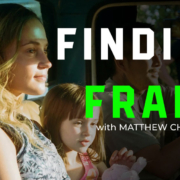
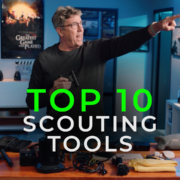
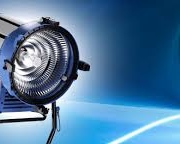

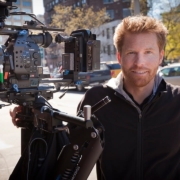
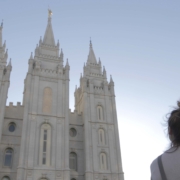


Trackbacks & Pingbacks
[…] Via Filmmakers Academy […]
Comments are closed.